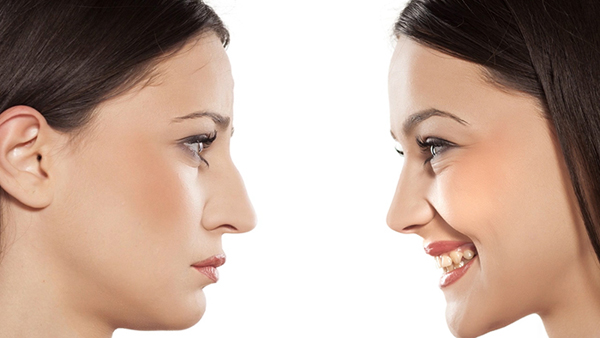Dr. Suhael Zahur
Humans have long tried to understand the beauty of the human face. Praxiteles’ Aphrodite from 450 BCE was considered a standard for artistic beauty for several hundred years.
With ideals of beauty changing over the last few millennia, concepts of beauty continued to build on foundations laid by past artists and scholars, as well as innate aesthetic preferences. Moreover, with the advent of modern media, popular icons have also shaped or have been shaped by the concept of beauty.
A prominent feature on the face, the nose plays an integral part in bringing balance and form to the profile. Even small abnormalties of this central facial element can lead to major disharmonies in global facial aesthetics. As such, when patients are unhappy with their nose, it is something that cannot be easily dismissed.
Rhinoplasty is the term used for the procedure commonly known as nose job or nose reshaping. A first to make a splash in the plastic surgery sphere, Rhinoplasty tops the charts as one of the most popular cosmetic procedures performed.
Historically, Dieffen bach in 1845 described alteration of nasal shape through external skin incisions closely followed by the first aesthetic rhinoplasty by Roe in 1887. However, it was Joseph who pioneered much of the early development of aesthetic rhinoplasty, including techniques and instrumentation.
And while technique and technology has changed since then, one thing is true-changing your nose has never been easier.
Some of the reasons people choose to undergo rhinoplasty include:
*unnatural size of the nose
*a bump on the bridge
*an off-center or crooked nose
*asymmetry due to injury
*excessively flared nostrils
*a droopy, thick tip or excessive width.
*breathing problems
*correction of a birth defect.
Being a precision surgery, Rhinoplasty patients want to know what they are getting themselves into before they start. In fact, the first question to be asked is how the nose will look like following the procedure. Nowadays with the aid of computer simulation, surgeons can show the postoperative results with reasonable certainity, helping both the patient and surgeon decide the perfect nose for the patient. But like any other aesthetic procedure, there are definite limitations to this procedure too. So it is important for the patient to have realistic expectations for the outcome and the surgeon to truly understand what the patient wants.
Anatomically, the external nose is composed of a series of interrelated parts that include skin, cartilage and bony pyramid. Surgical approaches to rhinoplasty are varied. The external, or “open,” technique involves a skin incision across the base of the strip of skin separating the nostrils called the columella. Internal or endonasal rhinoplasty involves incisions from inside the nasal cavity. The more commonly employed external technique allows a wider exposure of the nasal deformity to the rhinoplasty surgeon. During surgery, the skin isseparated from its cartilaginous and bony framework, reshaped intodesired form by either removing or adding cartilage and fascia followed by skin redraping. If the procedure involves an addition to the nasal structure, the desired cartilage is harvested either from the nasal septum or in some cases the rib. Towards the end, a temporary splint is applied over the nose to help maintain its new shape.
Possible complications like infection, nose bleed or minor irregularities are rare when performed by a qualified and experienced plastic surgeon.
Though rhinoplasty can fix many aesthetic and functional problems of the nose, it is vital to preserve the ethnic heritage of the patient and understand that rhinoplasty is about balance of the face and not about assuming the look of another racial or ethnic group. Whether you’re a patient seeking complete nose reconstruction or looking for a new look individualized to your ethinicity and face, there is no doubt rhinoplasty can help change your profile.
(The author is Consultant Plastic surgeon Aesthetica Clinic Narwal Bypass, Jammu)
Trending Now
E-Paper


